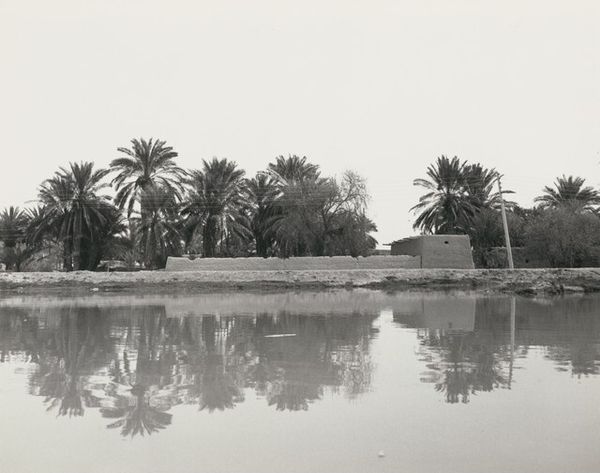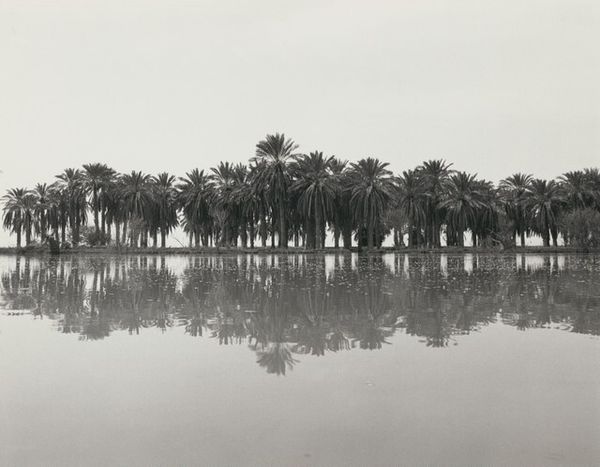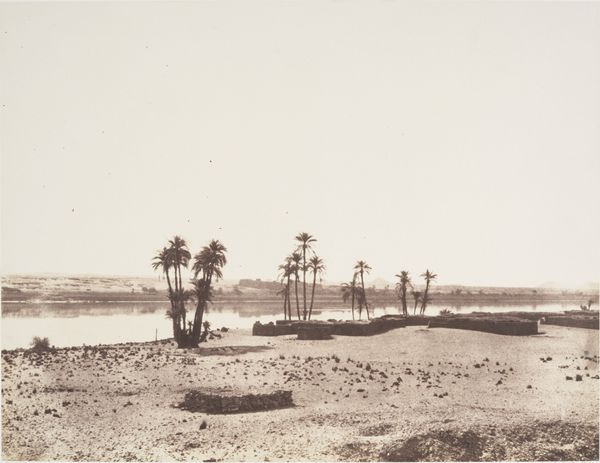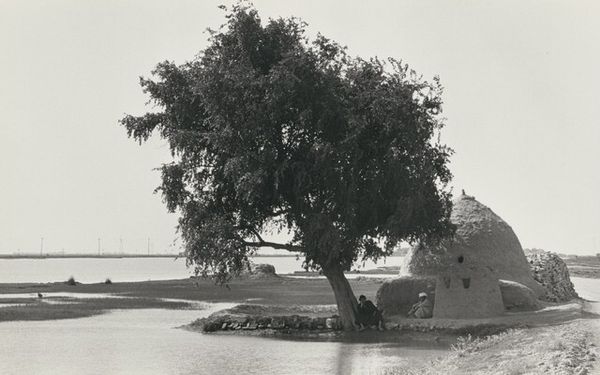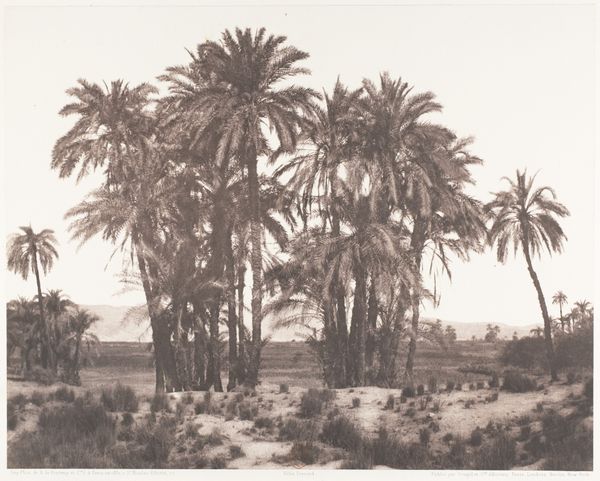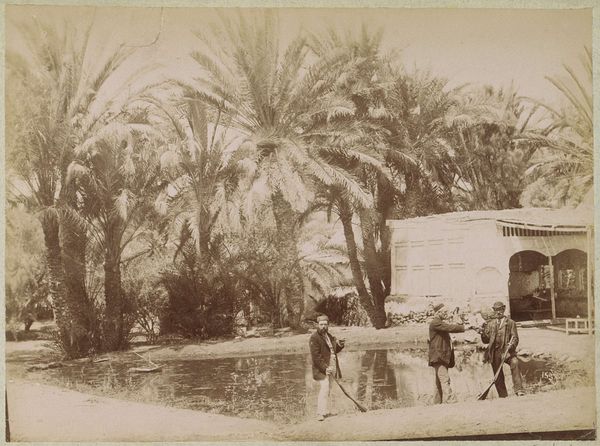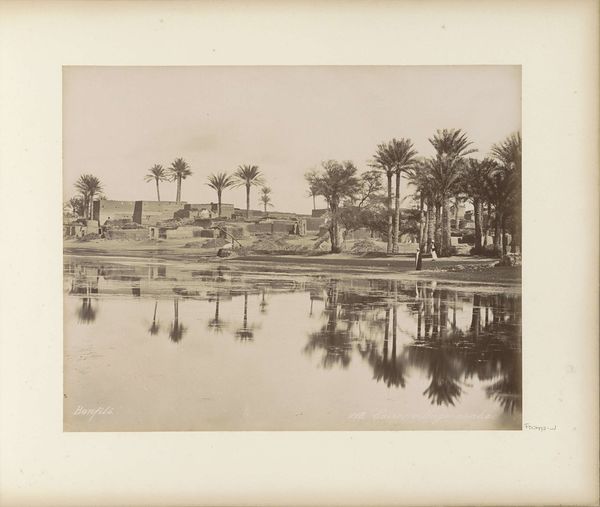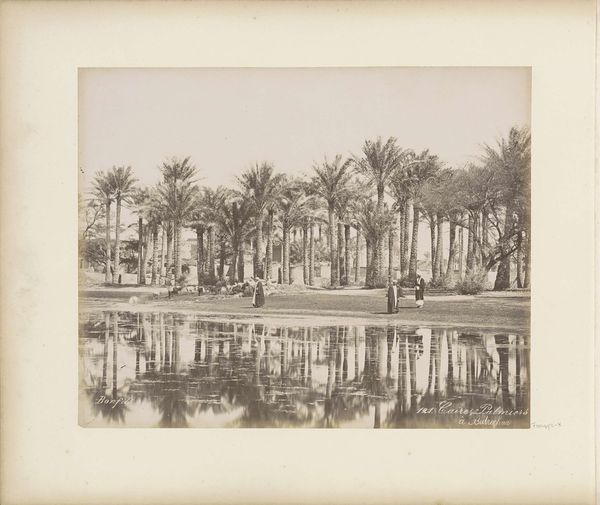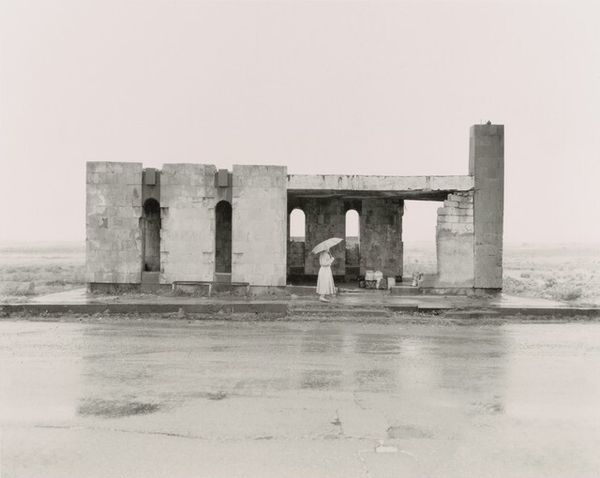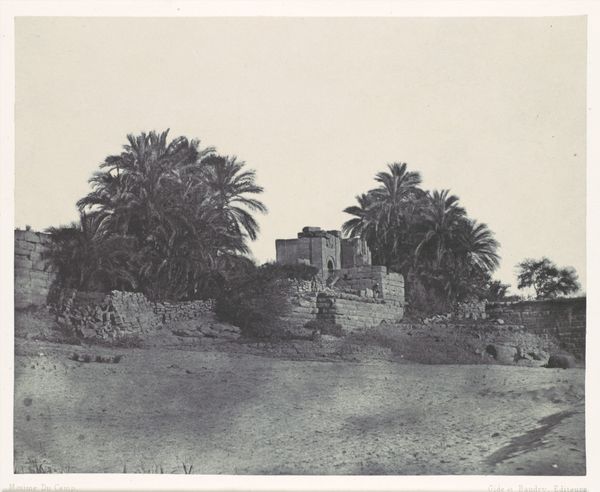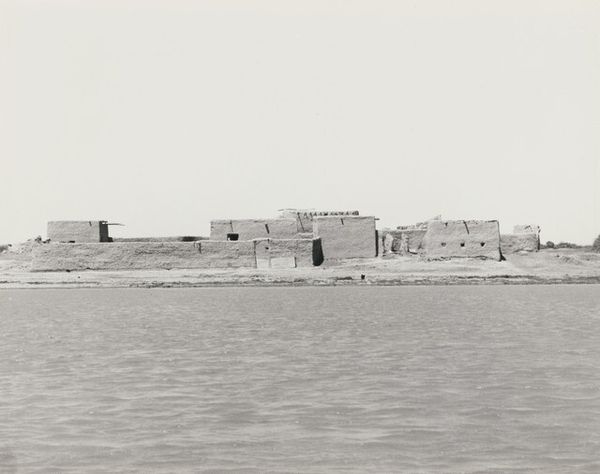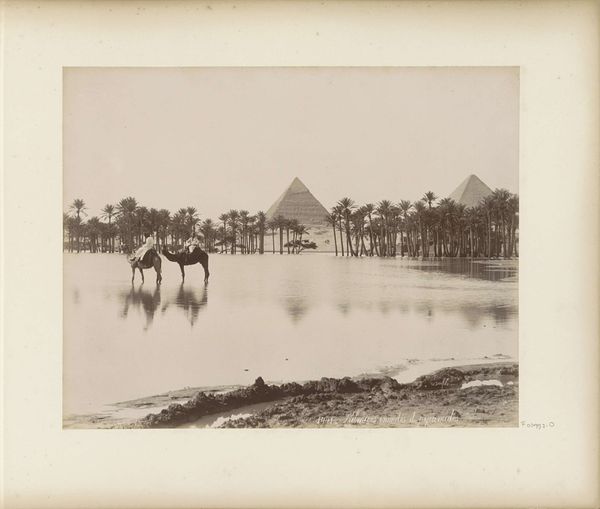
photography, gelatin-silver-print
#
landscape
#
photography
#
gelatin-silver-print
#
monochrome photography
Dimensions: image/sheet: 24 × 30.2 cm (9 7/16 × 11 7/8 in.)
Copyright: National Gallery of Art: CC0 1.0
Editor: This untitled photograph from 1980, by Ursula Schulz-Dornburg, using the gelatin-silver print method, strikes me with its stillness. The reflections in the water create a sense of mirroring, but of what, I’m unsure. What do you see in this piece from a historical perspective? Curator: I see a landscape charged with socio-political implications. Schulz-Dornburg often photographed landscapes marked by transition and often at borderlands. Knowing her body of work, I can assume she’s interested in documenting how specific socio-political policies shape how the land is being seen and treated at a certain period. Given that the artist often revisits particular sites over years or decades, does this abandoned structure or landscape feel to you like an end point or just a momentary view? Editor: It definitely has an abandoned feel, a pause in activity, perhaps, which makes me think of something not being fully completed. Curator: Indeed, Schulz-Dornburg photographs echo sites undergoing intense social or political transitions. One cannot disassociate that artistic tendency from the turbulent reality of many spaces during her time. I encourage you to also examine which institutions supported her travels. Understanding where an artist secured funding also frames how the images get circulated. Editor: So the choice to depict this, and how it was funded, could offer us insights into the photographer's intention and its meaning within broader historical narratives? Curator: Precisely. Think about whose stories are being told through art, and how institutions shape these narratives. The artist invites the viewers to ask about history and geography through its visual components, but also by thinking through how those landscapes or places were represented. Editor: This really underscores the relationship between art, politics, and institutions! Thank you for opening up that perspective. Curator: Thank you. Examining those relationships is vital to truly understand the photograph in our world today.
Comments
No comments
Be the first to comment and join the conversation on the ultimate creative platform.
